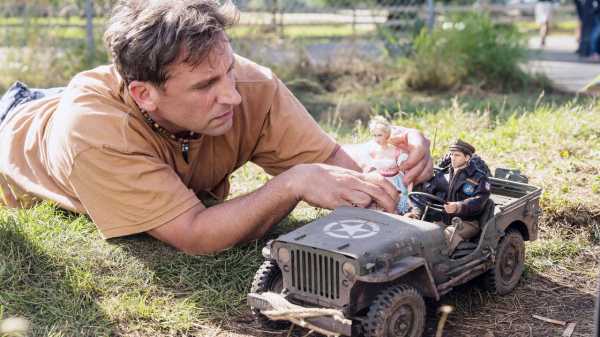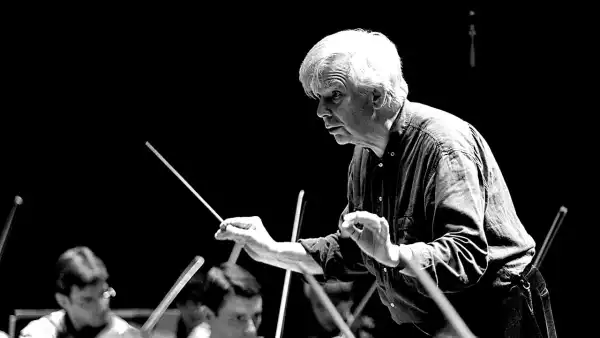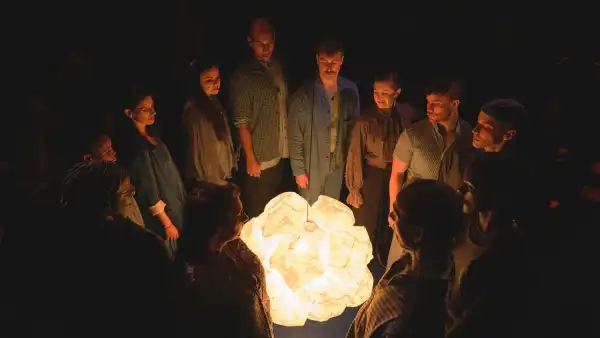
“Welcome to Marwen,” Robert Zemeckis’s adaptation of the true story that’s related in Jeff Malmberg’s 2010 documentary, “Marwencol,” is a film of an extraordinary virtuosity that hints at ideas that have motivated the director throughout his career. It’s not a dramatically satisfying film; the technique that Zemeckis displays is more impressive than it is moving, and it does aspects of the true story a clearly unintentional injustice. Nonetheless, it’s precisely the shortcomings of this well-meaning, heartfelt, and vigorously engaged tribute to a remarkable person—who also happens to be a remarkable artist—that ricochet off matters of a wide-reaching cinematic import.
The film stars Steve Carell, as Mark Hogancamp, a resident of Kingston, New York (a town about two hours north of New York City), who was brutally beaten in a bar fight by five men and left comatose. The beating (in the movie and in the the real-life story) was an act of gay-bashing: Mark, who isn’t gay, had spoke of cross-dressing, of his pleasure in wearing women’s shoes. When he awakened, nine days later, his brain injuries had obliterated much of his memory and damaged his motor skills. He needed to relearn basic skills—including walking—and hand tremors left him unable to pursue his former passion of drawing.
As a way of taking his therapy into his own hands (the real-life Hogancamp was, because of inadequate insurance, denied further benefits) and of resuming at least a version of his artistic endeavors, he builds a scale model of an imaginary Belgian village that was a battle site in the Second World War. He names it Marwen and populates it with a varied array of dolls (which he paints, styles, and costumes himself) to represent both characters in wartime dramas of his own making and characters in his real life, and he photographs these scenes in a style that mimics documentary war photographs—or, even more, frames from war movies. In a 2011 interview, the real-life Hogancamp even called the figurines his “little actors and actresses,” adding, “I am a one-sixth-scale film director formerly known as an artist.” The hero of his drama, Captain Hogie, is of course a version of himself, and each of the figurines is modelled on a person in his own life.
What’s notable about Zemeckis’s approach to this story is the technique that the filmmaker brings to bear on Hogancamp’s art. Zemeckis, a master of blending live action and animation (he’s the director of “Who Framed Roger Rabbit?” and “The Polar Express”), turns Mark’s dolls, sets, and photographs into mini-movies, in which the snap-jointed plastic dolls—complete with painted faces—are put into action, voiced by the people in Mark’s life whom they represent, expressly transforming Mark’s experiences into brief symbolic animated movies (and taking Hogancamp’s cinematic inspirations literally). With impressive technical sleight-of-hand, Zemeckis shifts the action between its levels of existence, from Mark’s life to his photos to the movies that play out the stories that he imagines.
The real-life Hogancamp and the character of Mark differ in significant ways. (Ellin Stein has outlined these differences for Slate.) The movie is centered on fictionalized versions of Mark’s relationships with women—a hobby-shop employee named Roberta (Merritt Wever), who befriends him and seeks a closer relationship with him, and a new neighbor, Nicol (Leslie Mann), with whom Mark falls in love. It also invents Mark’s struggles with prescription medication (as embodied in a malevolent figurine in Marwen) and with his own fears, which present obstacles to his delivering a victim-impact statement at the sentencing of his attackers. What’s peculiar in “Welcome to Marwen” isn’t its dramatic fabrications (which are all-too-standard in Hollywood movies) but their relationship to the body of work that’s at the center of the film. In “Welcome to Marwen,” Zemeckis emphasizes the therapeutic aspect of Mark’s photographs. The film shows him making them in order to relearn motor skills, in order to regain a measure of his former life—and also in order to achieve a psychological and emotional resolution that will manifest itself in practical accomplishments, whether in his participation in the sentencing hearing or his ability to maintain relationships.
As presented in “Marwencol,” Hogancamp (who wasn’t a professional illustrator, merely a hobbyist) relied on his art for both more and less literal concerns. He used it to express his unslaked anger toward his attackers, and many of his photographs are candidly gory death-images of the Nazis whom he identified with them. (He also, as in the fictionalized movie, relied on his photographs for romantic fantasy wish-fulfillment.) Yet his dramas also involve reconciliations between the various warring nations—Marwen (or, as he ultimately called it, Marwencol) is an open city of sorts, where Germans, Russians, Americans, and others set their arms and their conflicts aside and live in harmony.
Above all, however, Hogancamp—though he began his artistic project as a form of therapy—is an aesthete, whether or not he’d describe himself that way. His images have an extraordinary complexity and plasticity of composition, they contain vectors of action and gazes of a neo-Baroque intensity. They also have a fierce, concentrated earnestness that reinforces the sense of their quasi-documentary tone. The photographer achieves a classical resonance, grandeur, and complexity by relatively simple, do-it-yourself means. (One critic, discussing Hogancamp’s photography in “Marwencol,” calls attention to its utter lack of irony—a factor that distinguishes it from the work of other artists who photograph dolls.)
In “Welcome to Marwen,”, the local acclaim of Mark’s work is merely pleasant, but it’s important to him for the personal relationships that it fosters. In the documentary, the professional success that Hogancamp attained with his photos—far beyond the mere local acclaim dramatized in “Welcome to Marwen”—is its own reward. The real-life Hogancamp enjoys the recognition that he earns through print publication and at a New York art gallery; that recognition expands the purview of his experiences, but it isn’t clear whether this recognition has any greater effect on his well-being, on his personal relationships, on his mental health. But, when Zemeckis expands the photos into animated mini-movies, he not only instrumentalizes Hogancamp’s works, he changes their tone—he turns them whimsical and garish, and he loosens their involuted energies. He’s more interested in depicting art as a means to an end, as a force helping to push a character along a redemptive arc, than in observing the artist whose stringent dedication to beautiful creations is worthwhile in itself. Zemeckis, turning the photos into little narratives while embedding them in a narrative of his own, illustrates and allegorizes the failure of his own movie—it fails to see that the secret at work in Hogancamp’s real-life photos is not in the story of his life but in the spark of beauty in the photos themselves, which would be equally astonishing with or without knowledge of the tragic experiences that caused Hogancamp to create them.
Sourse: newyorker.com






